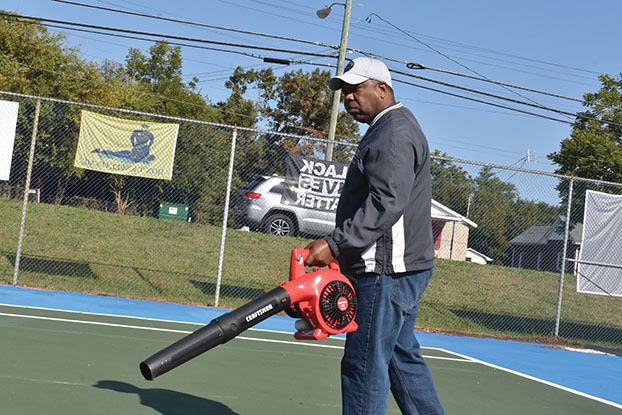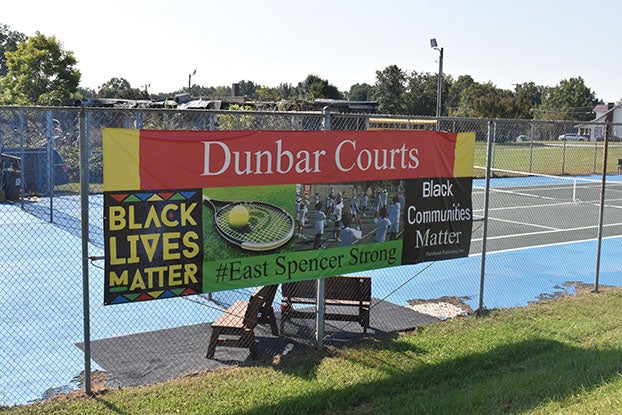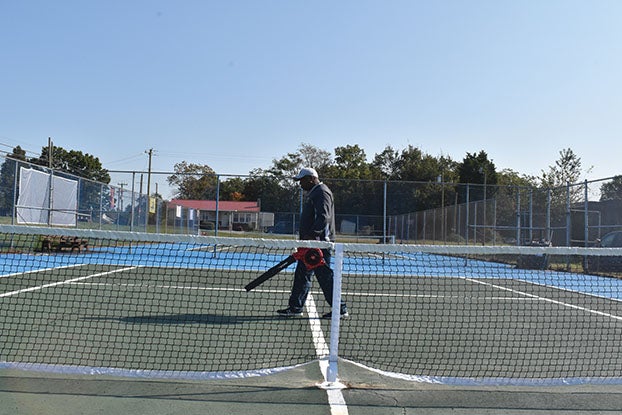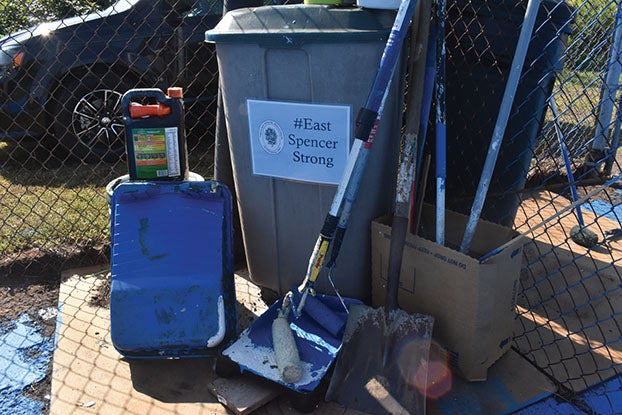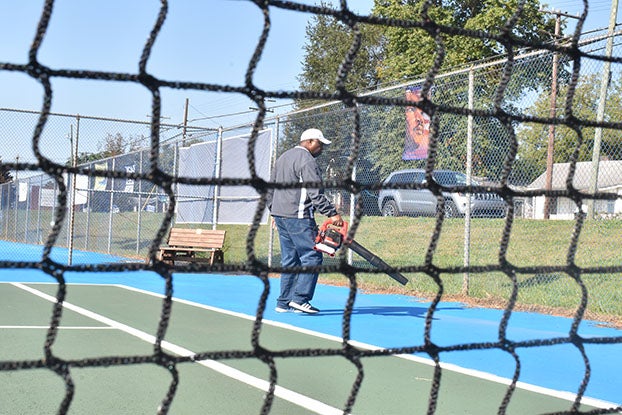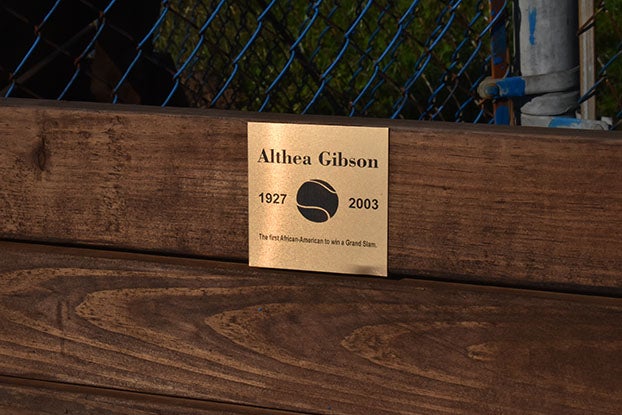Return of serve: Local resident revives tennis courts in East Spencer
Published 7:55 pm Wednesday, October 7, 2020
EAST SPENCER — After hitting a few shots back and forth over a tattered net, Martin Jackson looked at his father and delivered the verdict.
“Martin looked at me and said, ‘I think this court is salvageable. I think you could save this,’” said George Jackson, Martin’s father.
That’s all he needed to hear.
While walking past the two dilapidated tennis courts months earlier during a march protesting the death of George Floyd, George had an epiphany.
“I thought that if Black lives matter, then Black communities matter because Black people live in Black communities,” said George Jackson, an East Spencer resident. “I thought that this was a way to enhance the Black Lives Matter movement, not connected to the national movement, but a way to say our community is important. This dilapidated tennis court did not represent a community that was proud of its heritage and tradition, so the project began.”
Like the Dunbar School behind them, the courts had fallen into disrepair, creating an eyesore along North Long Street. George Jackson said even though he couldn’t refurbish the entire area, he could fix up the cracked tennis courts.
George Jackson contacted the Paul L. Dunbar Group — the organization that owns most of the land where the courts and school are located. Kenneth Lydell Muhammad El, chairman of the Paul L. Dunbar Group Board of Directors, said he initially was “hesitant” to let George Jackson work on the project because the group has plans to develop the area where the tennis courts currently sit. Muhammad El informed Jackson of the group’s plans to demolish the courts, but Jackson wanted to continue with the project anyway.
In August, Jackson went to work.
“It was at the point where we had to bring out a small chainsaw to cut down trees that had pushed their way through the pavement,” he said. “When I say it really hasn’t been played on in 30 years, I’m not stretching it.”
After chopping down the overgrowth and power washing the surface, he repainted the courts, whitening the lines and turning the out-of-bounds area a vibrant shade of blue. As August turned into September, he kept working, losing count of the number of hours he spent at the courts.
Part of the funding for the project came from the Martin Luther King Social Action Committee, an activist organization he started in 1993 in Rock Hill, South Carolina. The rest of the money needed to transform the courts came from George’s own pocket.
“I’ve lost weight, lost sleep, lost money,” George Jackson said. “But I’ve enjoyed it. It’s been well worth it.”
Besides rehabilitating the appearance and functionality of the courts, George has worked to ensure that players who use them receive a history lesson as well. He installed benches in the corners of the courts, each bearing a golden plaque that commemorates an achievement made by an African-American or Black tennis player. Among the names listed on the plaques are Sloane Stephens, a U.S. Open Champion, and Althea Gibson, the first African American to win a grand slam event. George named one of the courts after Arthur Ashe and the other for Venus and Serena Williams.
“I want to give people a sense of pride and a goal to set to emulate those who have gone before us,” George said. “When you see something positive, it starts to work on your psyche.”
He plans on installing green wind screens on one of the courts to block out the view of the former Dunbar School. The fence on the other side of the courts is already covered in signs, such as a picture of Martin Luther King Jr., but George said that he plans on adding more.
The courts that George spent the past two months renovating will officially open on Oct. 17, when he plans on hosting a day-long tournament featuring eight players from the Piedmont area.
Although Jackson has big plans for the courts he refurbished, Muhammad El said that the Paul L. Dunbar Group has plans to build a “live, work and play” development that will be called Dunbar Village where they current sit. Even though Muhammad El said he doesn’t think the courts will still be standing in 30 days, he is still thankful for what Jackson has done. Muhammad El said that the group will consider installing tennis courts elsewhere on the property.
“By doing what he did, he created some positive energy in the community,” Muhammad El said. “We sure appreciate that.”
Despite knowing that there are plans to demolish the courts, Jackson is content with seeing the courts back in playing shape.
“It hasn’t happened yet. I don’t know when or if it’s going to happen,” Jackson said. “But until that time, we’re going to do the best we can with what is there.”


